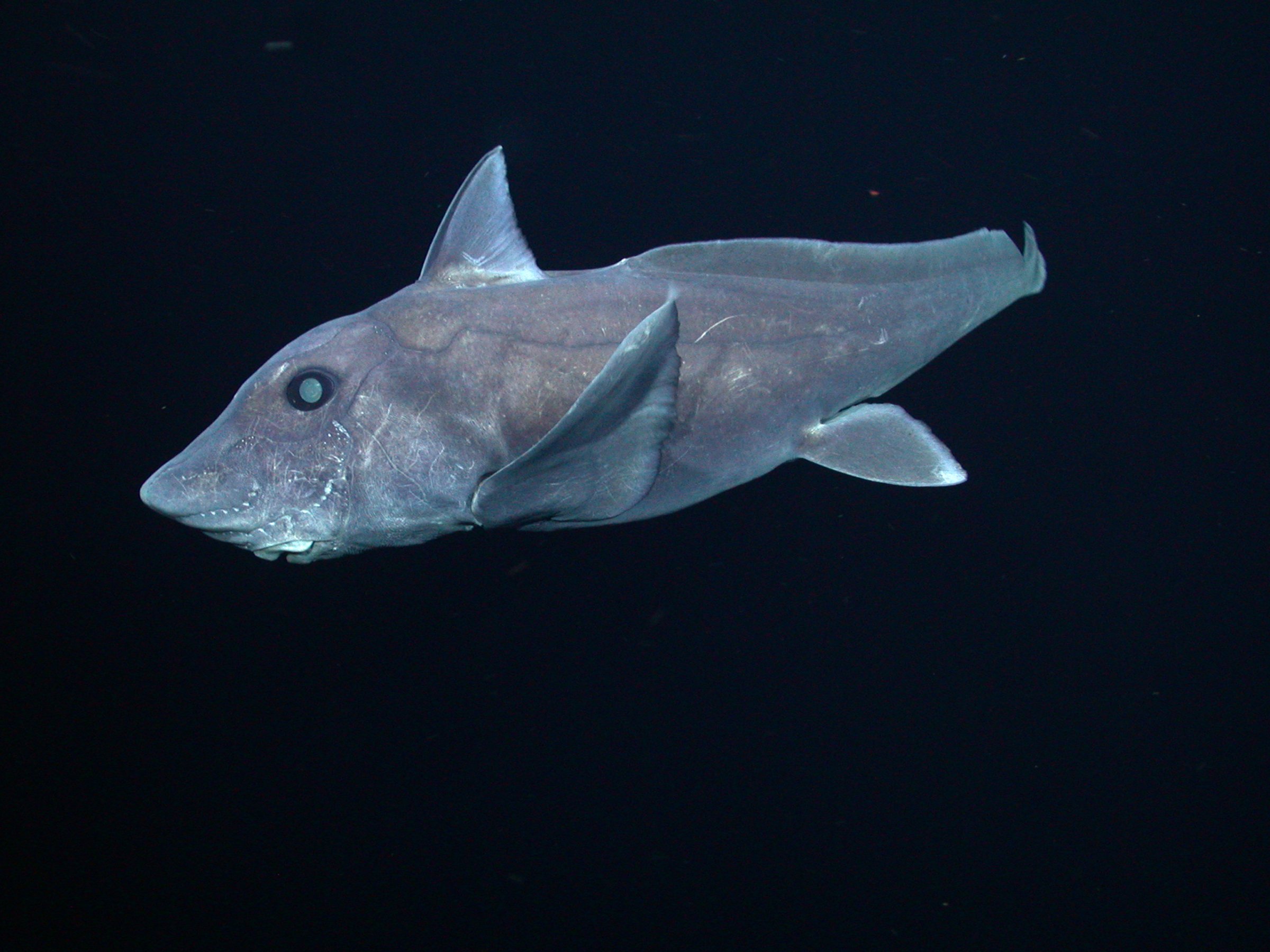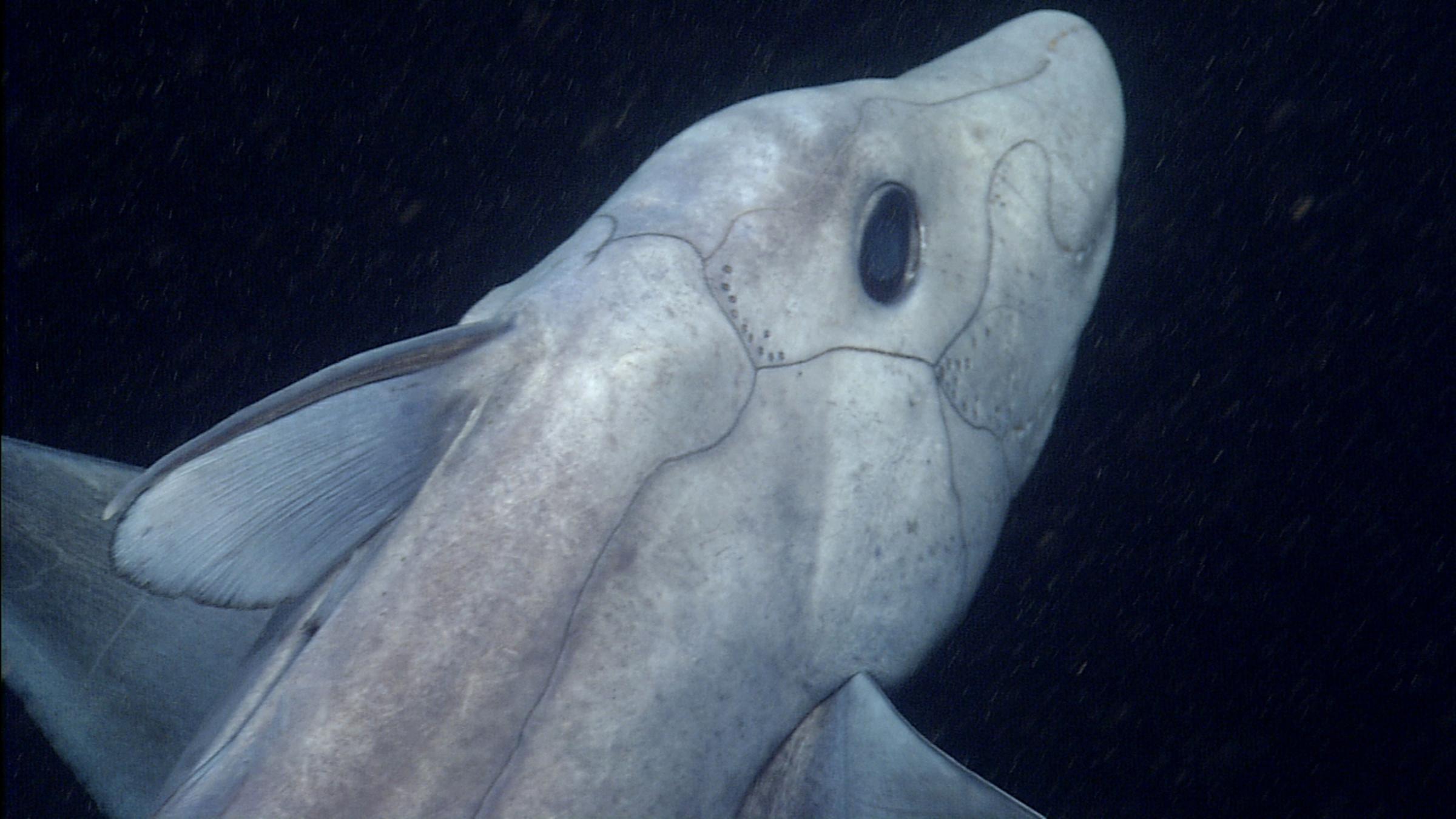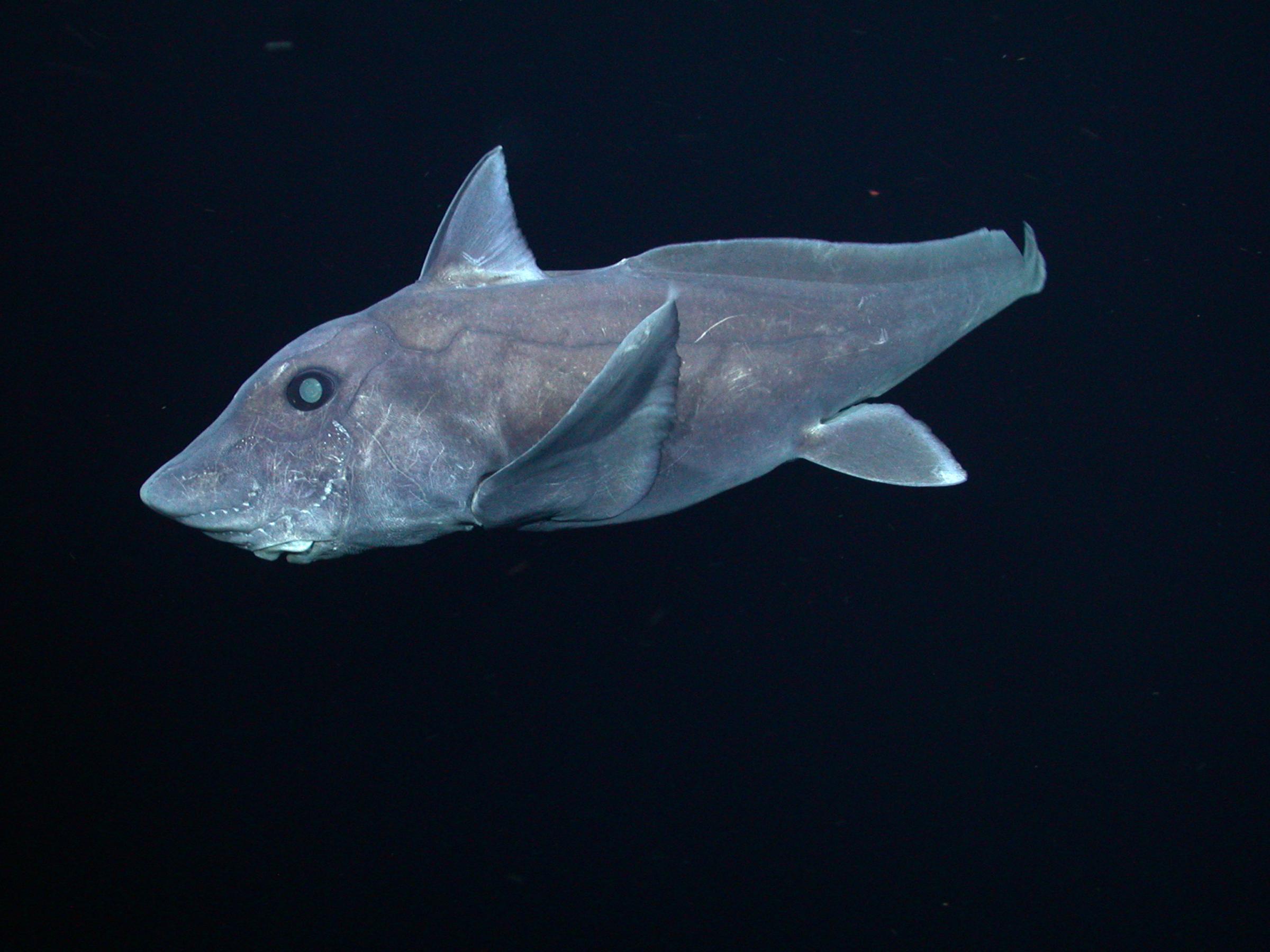
It’s impossible to know why the ghost shark rarely shows its face, but it’s hard to rule out embarrassment. There’s the absence of teeth for one thing. Then there’s the sickly bluish skin and the dim milky eyes. Oh, and there’s also the matter of the penis on its forehead. If you had a penis on your forehead you wouldn’t go out much either.
Whatever the reason for its elusiveness, the ghost shark—technically known as Hydrolagus cf. trolli—has rarely been spotted since it was first discovered swimming in the vicinity of Australia and New Zealand in 2002. Now, however, a team from the Monterey Bay Aquarium has not only seen a ghost shark, but released the first-ever video of it in the wild, patrolling the waters more than 6,700 ft. (2,000 m) deep in the vicinity of Hawaii. That brief bit of footage answers some questions—and raises some too.

The ghost shark video may have only just been analyzed and released, but it has been awaiting study ever since it was recorded in 2009, when Monterey scientists were conducting deep-water geology surveys with the aid of a remote-controlled submersible. There were few surprises in the images coming up from the robot—the usual outcroppings of rock and silt and the infrequent signs of life in the so-called midnight zone of the ocean below 3,280 ft. (1,ooo m) where very little light can penetrate. But then the picture came very much alive, as a 4-ft. (1.2 m) apparition drifted into frame.
Even to researchers who had never seen a ghost shark, it was easy to guess what the animal was. It had the characteristically pale skin, the filmy eyes suited to its shadowy world and, when it opened its jaw, the flat, mineralized plates that are all it needs to chew its exceedingly tame diet of worms, mollusks and other bottom dwellers. Also readily evident was the curious design of the skin that covers its head, which appears to have been assembled from several large plates. Dots that line the edges of the plates are thought to be a sensory system, even if they look for all the world-like rivets holding the plates in place. The penis, which is retractable—because, why not?—was not in immediate evidence. The shark, however, provided no shortage of opportunities for the investigators to gaze at all of its features in detail.
“It’s almost a little comical. It would come up and bounce its nose off the lens and swim around and come back,” said Dave Ebert of the Pacific Shark Research Center at Moss Landing Marine Laboratories, who helped conduct the analysis, in an interview with National Geographic.

Just how one fish came to be loaded with such a grab bag of adaptive features is not entirely clear, and one of the other names it goes by—the pointy-nosed blue chimaera—expresses that mystery nicely. The chimaera part of the name is a nod to a beast from Greek mythology that was part goat, part lion, part dragon and part whatever other critter was suited to whatever story was being told at the moment. The genome of the ghost fish might well be a similar mash-up of different species of shark and other fish.
A DNA test, of course, would be the best way to tease out all of the animal’s near and distant kin, and that would also be the only thing that would allow it to shed the cf in its formal name—a Latin abbreviation for “compare to,” which in this case means “as far as we know.” But the elusive fish does not lend itself to being captured for study, though now that it’s been seen in two such remote parts of the world, ichthyologists have more places to search.
Until then, researchers like Ebert are left to scouring coastal fish markets for a luckless ghost shark that may have been scooped up in a drift net and put out for sale. That would be an ignominious end for so spectral a fish—one of those situations in which what is very good for science would be very bad for our sense of wonder.
More Must-Reads from TIME
- Cybersecurity Experts Are Sounding the Alarm on DOGE
- Meet the 2025 Women of the Year
- The Harsh Truth About Disability Inclusion
- Why Do More Young Adults Have Cancer?
- Colman Domingo Leads With Radical Love
- How to Get Better at Doing Things Alone
- Michelle Zauner Stares Down the Darkness
Write to Jeffrey Kluger at jeffrey.kluger@time.com